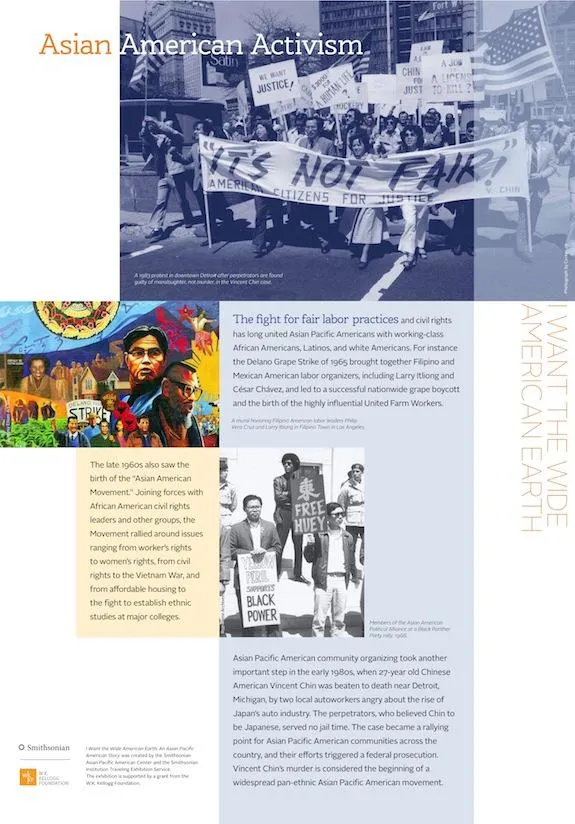From the Civil War to Civil Rights: The Many Ways Asian Americans Have Shaped the Country
A new exhibit in time for Asian Pacific American Heritage Month highlights the long, diverse history of Asian Americans
/https://tf-cmsv2-smithsonianmag-media.s3.amazonaws.com/filer/20130503083041Detroit_Thumb.jpg)
When Christopher Columbus set off across the Atlantic in search of a Western route to Asia, the continent became a footnote in the discovery of America. But before the country was even founded, Asians and Asian Americans have played integral roles in the American story. Some chapters of that history are well known: the impact of Chinese railroad workers or the internment of Japanese Americans during World War II. But countless others have been overlooked.
In honor of Asian Pacific American Heritage Month, a new traveling show developed by by the Smithsonian Institution Traveling Exhibition Service (SITES) and the Smithsonian Asian Pacific American Center seeks to provide a more complete story of Asian American history. Now on view at the American History Museum, the exhibition “I Want the Wide American Earth: An Asian Pacific American Story” begins with the pre-Columbian years and spans the centuries, to tell of the Asian experience with a series of posters featuring archival images and beautiful illustrations that eventually will travel the country. A condensed set of exhibition materials will also be distributed to 10,000 schools nationwide as teaching tools.
Though often marginalized with legislation like the Chinese Exclusion Act of 1882, Asian Americans were central to American history, “from the Civil War to the Civil Rights Movement,” explains Konrad Ng, director of the Asian Pacific American Center.



The densely packed exhibit resonates with many of today’s conversations around immigration, identity and representation. Beneath the broad banner of Asian American identity dwells a deeper, more diverse set of experiences. The Puna Singh family, for example, represents a unique blending of cultures that occurred when Punjabi men–unable to immigrate with Indian brides–became employed in agriculture in the West, and met and started families with female Mexican fieldworkers. “The story of Asian Americans,” says Lawrence Davis, who worked on the exhibition, “is very much one that’s not in isolation.”
The Asian experience is one that includes a diversity of cultures and countries. As early as 1635, Chinese merchants were trading in Mexico City. By the 1760s, Filipinos had set up fishing villages in the bayous of New Orleans, and Vietnamese shrimpers and fishermen are a large part of the Coast’s current economy. Asian Americans fought on both sides of the Civil War, including two brothers, who were the sons of the famous conjoined twins Chang and Eng, brought to the U.S. by circus-owner P.T. Barnum. In 1898, Wong Kim Ark, a Chinese American, won a landmark Supreme Court case, which established the precedent of birthright citizenship. In the 1960s, Filipino workers marched alongside Cesar Chavez for farm workers’ rights.
The exhibit borrows its title from the 20th-century Filipino American poet, Carlos Bulosan who wrote:
Before the brave, before the proud builders and workers,
I say I want the wide American earth
For all the free.
I want the wide American earth for my people.
I want my beautiful land.
I want it with my rippling strength and tenderness
Of love and light and truth
For all the free.
“When he arrived in the U.S., like most immigrant stories, it wasn’t easy,” says Ng of the poet. “And yet he still came to love this country.” Despite the hardship, discrimination and even vilifying, many Asian Americans came to love this country as well, and from that love, they improved it and became an integral part of it.
Though Ng had a hard time singling out any favorite chapter from the show, he says many present “new ways to think about the community,” including the politics of international adoption, the spread of Asian food cultures and much more.
“I Want the Wide American Earth: An Asian Pacific American Story” will be on display at the American History Museum through June 18, 2013 before traveling to the Japanese American National Museum in Los Angeles.
/https://tf-cmsv2-smithsonianmag-media.s3.amazonaws.com/accounts/headshot/Leah-Binkovitz-240.jpg)
/https://tf-cmsv2-smithsonianmag-media.s3.amazonaws.com/accounts/headshot/Leah-Binkovitz-240.jpg)